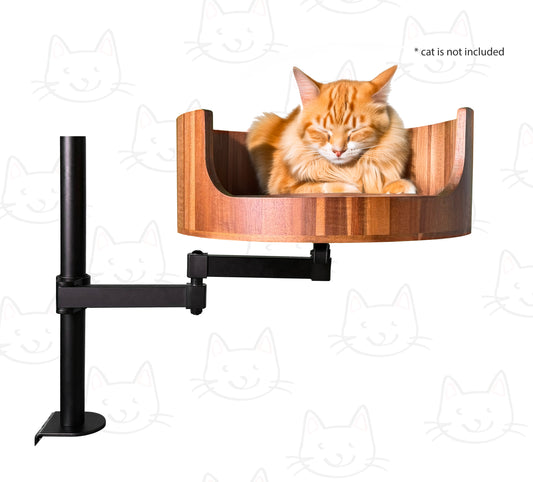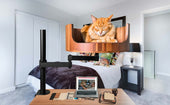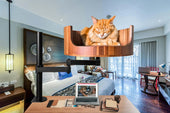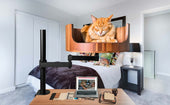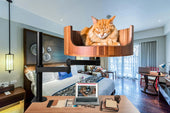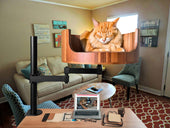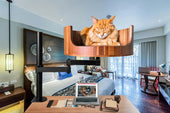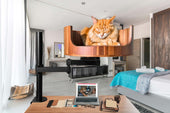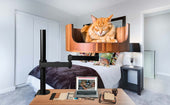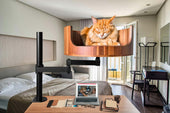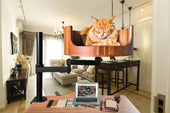
My Cat Keeps Biting Me: Understanding the Behavior
Share
If you have ever experienced the sharp sting of your cat's teeth sinking into your flesh, you are not alone. Many cat owners struggle with their feline companions' biting behavior, wondering what prompts this seemingly aggressive action. In this article, we will explore the reasons behind why your cat may be biting you and offer strategies to help address and prevent this behavior.
Cats bite for a variety of reasons, including playfulness, attention-seeking, or even anxiety. Understanding the root cause of your cat's biting can help you take steps to mitigate it. From setting boundaries during playtime to providing enrichment and mental stimulation for your cat, there are several approaches you can take to address this issue. By taking a closer look at your cat's behavior and environment, you can create a harmonious relationship with your feline friend and minimize the risk of being on the receiving end of their sharp teeth.
1. Cats may bite as a form of communication, play, or reaction to stress. Understanding the reason behind the behavior is crucial in addressing it effectively.
2. Positive reinforcement techniques, such as rewarding good behavior and providing interactive toys, can help redirect biting tendencies in cats.
3. Regular play sessions and environmental enrichment can prevent boredom and reduce the likelihood of biting incidents.
4. Avoid punishment as a response to biting, as it can lead to fear and aggression in cats.
5. Seeking advice from a veterinarian or animal behaviorist can provide personalized guidance on managing biting behavior in cats.
Causes of Cat Biting
Cat biting behavior can stem from various causes, including play aggression, fear, overstimulation, and territoriality. Play aggression typically occurs when cats engage in rough play, often biting or scratching. Fear-induced biting may happen when a cat feels threatened or cornered, leading to defensive reactions. Overstimulation can prompt cats to nip as a way to signal that they are no longer enjoying the interaction. Additionally, cats may bite to establish dominance or protect their territory from perceived intruders.
Training Techniques for Cat Biting
To address cat biting behavior, it is essential to implement proper training techniques. Positive reinforcement, such as rewarding good behavior with treats or praise, can help teach cats to associate positive outcomes with not biting. Redirecting the cat's attention to a toy or scratching post when it shows signs of wanting to bite can also be effective. Consistency in training methods and patience are key to successfully modifying biting behavior in cats.
Seeking Professional Help
If a cat's biting behavior becomes excessive or uncontrollable, it may be necessary to seek the assistance of a professional, such as a veterinarian or animal behaviorist. These experts can assess the underlying causes of the biting and provide tailored solutions to address the issue. In some cases, medication or behavior modification techniques may be recommended to help manage the cat's aggressive tendencies. It is crucial to address biting behavior promptly to prevent any potential harm to the cat or other household members.
Case Studies of Cat Biting
Several case studies have illustrated the complexities of cat biting behavior and the importance of understanding its underlying causes. For instance, a cat that bites during playtime may benefit from interactive toys that stimulate its hunting instincts, redirecting its aggressive impulses in a more appropriate manner. In another scenario, a cat biting out of fear may require a gradual desensitization process to build trust and reduce anxiety triggers. These real-life examples highlight the need for individualized approaches to effectively address cat biting behavior.
Frequently Asked Questions
How can the Desk Cat Nest help with my cat biting me?
The Desk Cat Nest provides your cat with a comfortable and safe space to rest and play, which can help alleviate stress and reduce aggressive behavior such as biting. The cozy design encourages your cat to spend time in their own designated area, potentially decreasing the likelihood of them biting you.
Is the Desk Cat Nest easy to assemble?
Yes, the Desk Cat Nest is designed for easy assembly with straightforward instructions included. No special tools are required, making it simple and hassle-free to set up for your feline friend.
Is the Desk Cat Nest durable and sturdy?
Yes, the Desk Cat Nest is crafted from high-quality materials to ensure durability and stability. The sturdy construction can withstand your cat's playful behavior and provide a secure environment for them to relax without risk of it collapsing or breaking.
Can the Desk Cat Nest fit on any desk?
The Desk Cat Nest features a space-saving design that can easily fit on most desks or tabletops. It is compact yet spacious enough for your cat to comfortably lounge and play in, making it a versatile solution for any home or office setting.
How can I encourage my cat to use the Desk Cat Nest instead of biting me?
You can entice your cat to use the Desk Cat Nest by placing their favorite toys, treats, or bedding inside to create a welcoming environment. Positive reinforcement, such as praising and rewarding your cat when they use the nest, can also help encourage good behavior and deter them from biting you.
In conclusion, the Desk Cat Bed is a valuable choice for pet owners dealing with a cat that keeps biting them. Not only does it provide a comfortable and cozy space for your feline friend to relax, but it also helps to create boundaries and reduce the likelihood of unwanted behavior such as biting. By giving your cat a designated spot to rest and play, you can help to strengthen your bond and provide a safe and enjoyable environment for both you and your pet. Invest in a Desk Cat Bed today and say goodbye to those pesky cat bites!

